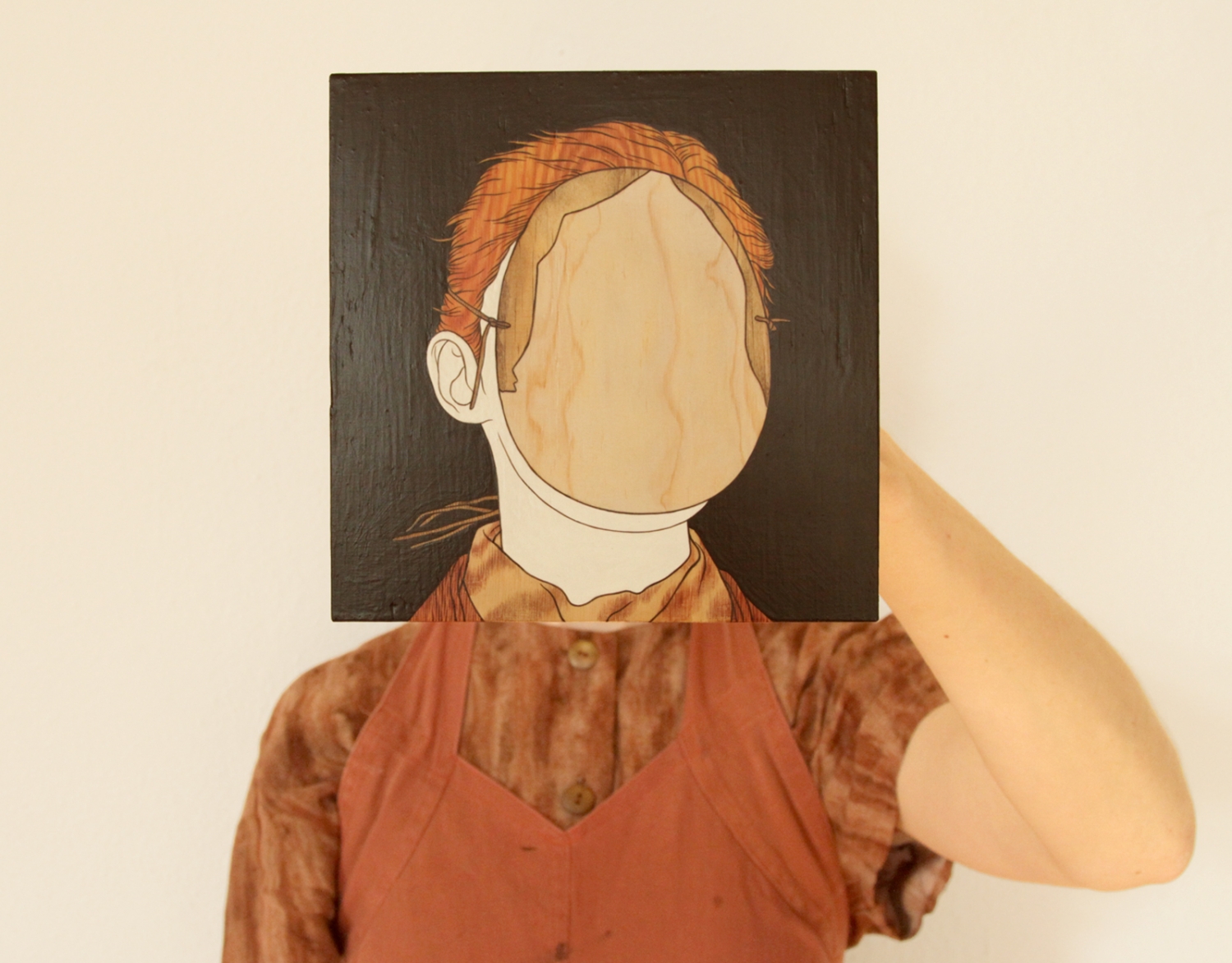love
Moki, That You Are

Some time ago, when I was living back home in Argentina, a friend of mine posted a beautiful art work on my Facebook wall. It cast a spell on me and I immediately clicked on the link. Like all things, it partly faded away from my memory and partly lingered on. When living here in Berlin, I went back to the image and did some research on the artist. Under the name "Moki," I discovered she was a German artist based here in the city. The rest is history, or well, our-story.
Moki is a sweet young woman with a very soft tone of voice and gentle manner. After an email exchange that lasted quite a few weeks, and still having no idea if she was a man or a woman, I visited her temporary atelier in Kreuzberg. She also confessed she thought I was German since our emails had always been written in the local language. Over water and chocolate cookies, we discussed both of our home towns and the importance of nature in her worldview.
Moki paints other possible worlds or worlds within worlds. Some of her works resemble a dream-like circumstance and some just remain mysterious to the viewer. The artist tells me that even though she lives in Berlin, she can work from wherever. Her surroundings affect her work to a very little extent since she works intuitively. Coming from a family of musicians and artists, she shares that as a child someone asked what she wanted to be when she grew up and she was torn between becoming an artist or an Opera singer. Regardless of the fact that I have not heard her sing, I believe she made the right choice.
The non-Opera singer draws from many different landscapes to paint: some are more Scandinavian like while others are Asian like. She paints scenes that come to her mind without really imagining the stories behind them. Moki feels that visual language is her means of creation, the stories or verbal interpretations one can make are not something she considers or established beforehand. "What I try to express in my paintings I cannot say with words because it comes from a feeling that isn’t so easily verbalized."
Moki’s identity remains a mystery. She tells me that her nickname was originally "Yoki" and then transformed into "Moki," what she goes by nowadays. In her paintings, she depicts different beings or creatures.
You often paint animals or a mixture of animal and human being. What is your favorite thing about them?
What I like about animals is precisely what I dislike about human beings. I grew up in Germany, a country that led the war, and had a very negative idea of Humanity. This view was marked by the idea that human beings are capable of handling themselves in a very ruthless or thoughtless way, even though there is also goodness to them. Animals, on the other hand, are similar to children, in a way. They are innocent, unblameable. However, it is not important for me if there is a human being or an animal in the paintings, I consider them a presence, simply beings, regardless of what they are.
There is a lovely word in German "Waldeinsamkeit" (the feeling of being alone in the woods, at one with the universe) that made me think of your work. What is your favorite feeling?
I had my most intense perceptions when I was alone amongst nature as I child. This harmonious feeling of being a part of everything around oneself is something I experienced mostly during my younger years, a very round, pleasant feeling. I wouldn’t say that’s my favorite feeling, it just happens every once in a while.
What would you say is the most mysterious aspect of life?
I think that is exactly the question I try to ask with my work. When you look at it, something about it isn’t clear and one has to look longer or pay special attention. Something is happening but it’s hard to say exactly what at first glance. Every viewer has to find a possible answer or interpretation after lingering some time in the painting. I paint something unconsciously but afterwards I also try to discover what it could be or mean. However, some remain as mysterious to me as when I first conceived the idea.
Nature is indeed an unfathomable force. Much like the Romantics in the nineteenth century, Moki is in a quest to explore how we relate to it through different emotional states, such as harmony and fear. Some paintings exude peace and unity with the atmosphere, while others are unsettling and somewhat ominous. The artist has created a portal for us to go through and explore but those who enter will have to find the way themselves.
Moki recommends: the art of Melanie Authier and Inka Essenhigh and the books "Abwesen: Zur Kultur und Philosophie des Fernen Osten" by Byung-Chul Han and "Kafka on the shore" by Haruki Murakami.
woodgrain by mioke from toise on Vimeo.
[Price range of works: 500 – 8,000 Euros]
Article by Sofía Martinelli
Be the first to write a comment.
Your feedback





